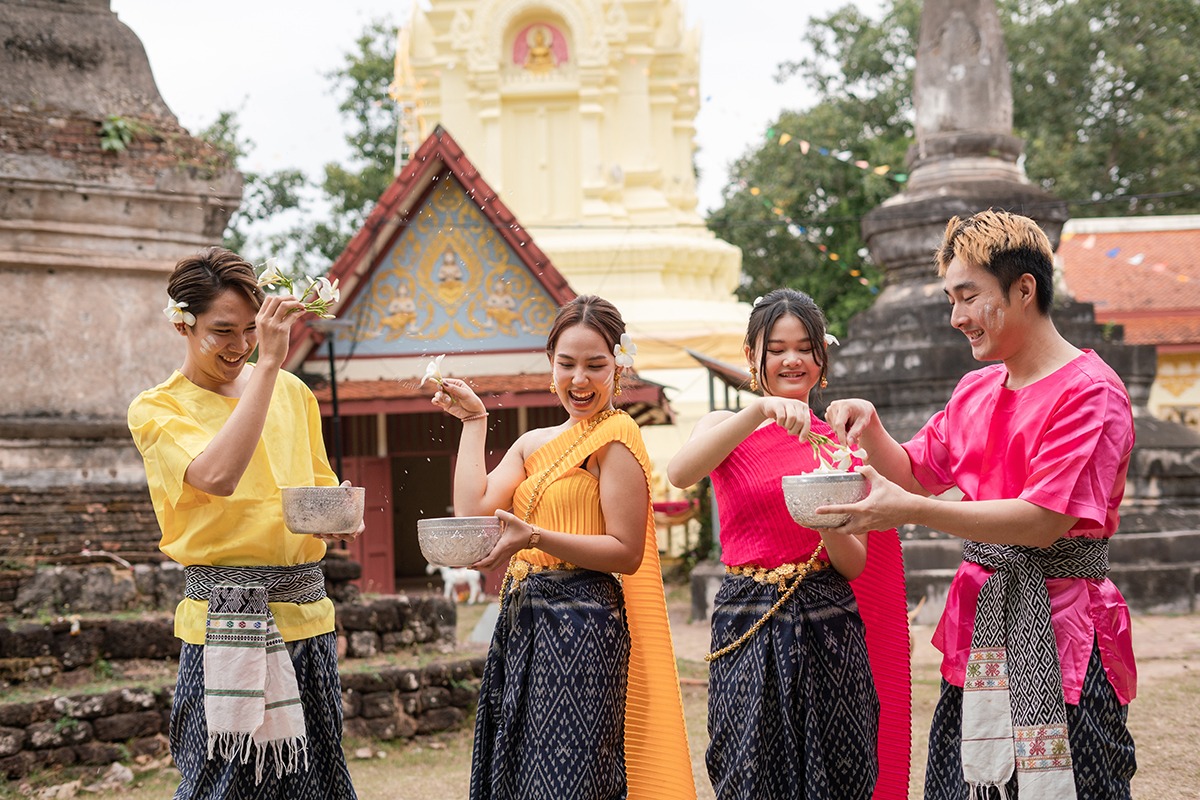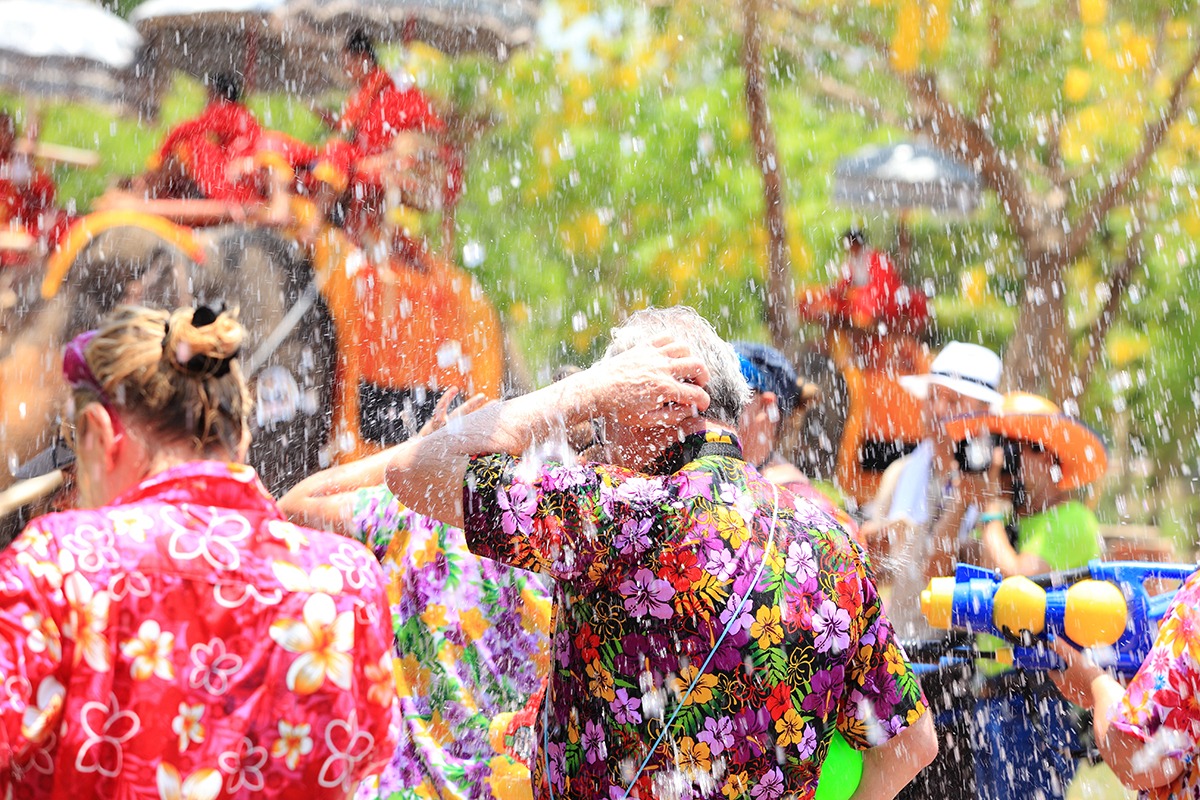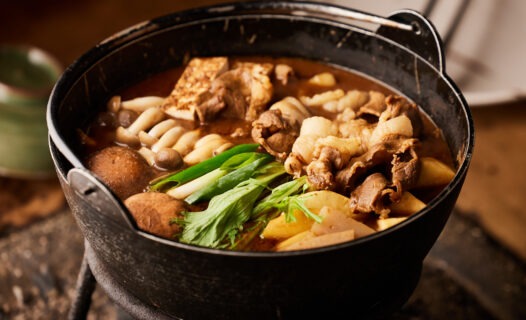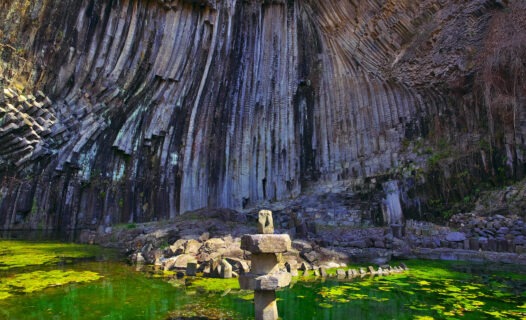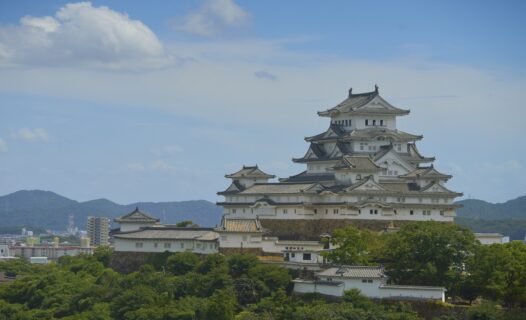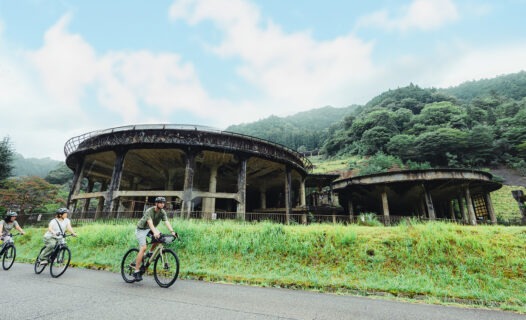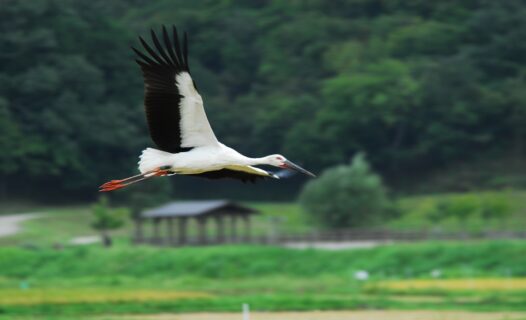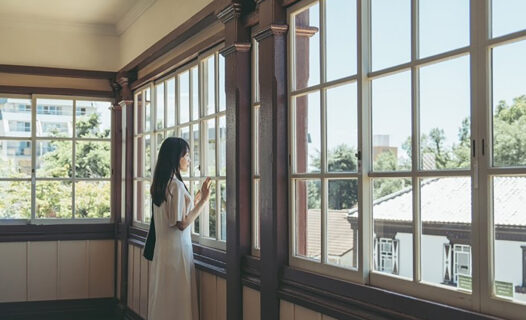It’s time to celebrate the Thai New Year with Songkran 2024! In 2024, Songkran will be celebrated between April 13th and April 15th, and there’s plenty to learn about this significant Thai holiday. While Thailand officially celebrates the beginning of the new year on January 1st, Songkran remains the traditional start of Thai New Year and is celebrated as a national holiday.
In 2023, Unesco formally inscribed the Songkran festival on its Intangible Cultural Heritage of Humanity List, showcasing just how important this event is, not only to Thailand but to human history. Whether you’ve celebrated Songkran before or this is your first time, Agoda has pertinent information and tips that are sure to be valuable during your stay in Thailand for Songkran 2024.
Explore the Origins of Songkran and its Meaning
The word ‘Songkran’ comes from the Sanskrit word for ‘movement’ as it’s related to astrology, with an emphasis on the importance of moving forward in life. Oftentimes, celebrants will kick off Songkran celebrations by reuniting with their families. Once together, there’s a focus on honoring older adults and ancestors, along with sacred Buddha images.
Water plays a big role in the celebration of Songkran, as it represents a symbolic way to wash away the previous year and usher in the new. Some visitors may even know Songkran as the Thai Water Festival, which only further showcases the important role that water plays in this exciting holiday.
The origins of the Songkran Festival are believed to start more than 500 years ago, and many special traditions remain today, including water splashing activities, crafting sand pagodas, honoring elders and ancestors, and merit-making as practiced by Buddhists.
While there are some regional differences throughout Thailand, there are a few activities that remain constant, like washing away old misfortunes, praying for a prosperous New Year, and honoring ancestors.
The Significance of Songkran Festival in Thailand
Other than being known in general as the water festival, each day of the Songkran Festival has a special significance.
- April 13th – Maha Songkran Day, the day the sun moves into the zodiac sign of Aries, or the last day of the prior year. This day is also called National Elder Day when families come together to celebrate elders and ancestors. Traditionally, younger people pour fragrant water into the hands of elders and ask for their blessing. Scented water may also be poured over the shoulder and down the back of elders, while practitioners say blessings.
- April 14th – Nao Day, which is also known as National Family Day, marks the transition between the old year and the new. On this day, families will often rise early and offer alms to Buddhist monks. The rest of the day is spent together celebrating as a family.
- April 15th – Thaloengsok Day, or New Year, is the day when the Thai New Year is officially celebrated. On this day, celebrants will often perform important religious rituals, including ‘Bathing the Buddha’ where statues of Buddha are cleansed with fragrant water. This ritual symbolizes purification and is meant to wash away any misfortunes from the previous year.

Songkran Traditions – What are the Traditional Practices During Songkran?
While Songkran is known as a water festival in Thailand and is the perfect opportunity to cool off during the warm weather, there are plenty of other Songkran events to engage in. Here are some of the top Songkran activities that you might want to try out during your visit:
Merit-Making During Songkran 2024
Songkran isn’t just about having fun with water, it’s also about religious devotion, of which merit-making plays a big part. During this time, families will honor Buddha, ask for blessings, and make offerings to Buddhist monks. Families will often get together and visit local Buddhist temples, and while there, will offer food to the monks. Commonly, these offerings include preserved foods and cooked dishes, and some offerings even include clothing for the monks.
Merit-making is an important part of Songkran. It’s done partially in the hopes that these charitable and compassionate acts will afford Buddhist practitioners some karmic virtue, and partially in the hopes of eliminating bad luck. Some people also release caged animals, particularly fish and birds, as an act of compassion which is believed to bring good fortune.
Performing Water Pouring on Buddha Statues (Song-nam-phra)
In both the temples and at home, celebrants will pour scented water (nam-ob) over statues of Buddha during Songkran. Water is used to purify, and during this act, it’s hoped that the sins and misfortunes of the previous year will be washed away.
Performing Water Pouring on the Elderly (Rod-nam-dam-hua)
Another reverent act that’s performed is pouring scented water on the elderly. During this act, younger family members will pour water on the palms of their elders, and ask for their blessings. This act helps to strengthen familial bonds and shows respect to elders in the community.
Carrying Sand to a Temple and Making Sand Stupas
Practitioners also make sand stupas or sand mounds. These mounds help with temple repairs as, during the year, sand from the temple is carried away on the shoes of visiting practitioners, and bringing sand back as an offering is a charitable act. These sand stupas are considered a part of merit-making activities and represent personal pagodas.
How Songkran is Celebrated
Celebrating Songkran is beloved by locals and visitors alike, and there are plenty of Songkran events and celebrations acrossThailand to enjoy. Here is some pertinent information that will help you plan the best Songkran 2024 for you and your family:
- Fun water fights – Water plays a huge role in Songkran and celebrants will find themselves collecting water in buckets, using water guns, and finding other implements to spray water with. Once on the streets, people will playfully engage in splashing with family and friends. This act both symbolically washes away the previous year and helps people beat the heat as April is a very hot month in Thailand.
- Family gatherings – Honoring family is a big part of Songkran, and people will often get together to enjoy each other’s company, honor elders with rituals, and observe other traditional rites.
- Religious observance – While there are many religious aspects to Songkran, one in particular is “Song Nam Phra” which translates to “pouring water on monks”. During this act, scented water is poured on Buddha images as a symbolic act of respect, and in the hopes of receiving good fortune and prosperity for the new year. This religious activity can be performed at homes or in local temples.
- Wear bright traditional attires / floral-printed shirts – Clothes also play a part during Songkran, with plenty of options to choose from. Many people will adorn themselves in colorful, traditional Thai clothing, which includes tops and shawls made of silk for women, and long, button-up shirts with sashes for men. Others may opt for more casual attires, such as brightly colored, floral-printed shirts. Whether dressing traditionally or in printed shirts, it’s good to remember that you may end up getting wet, so plan accordingly and choose fabrics that you feel comfortable wearing, especially in the tropical heat!
- Street parties and delicious street food – Songkran is a celebration, and some areas of Thailand will feature huge street parties where people listen to music and engage in water splashing. People may also paint each other’s faces with talc, or dab each other’s faces with fragrant jasmine water. While locals may opt to eat at home during Songkran, visitors and others will want to check out the many delicious street food offerings, like mango sticky rice or Pad Thai.
- Miss Songkran Pageant Contest – One of the highlights of the Songkran festivities is the Miss Songkran Pageant contest, an event you won’t want to miss. Held in various locations, this pageant showcases beautiful ladies elegantly adorned in traditional Thai costumes. Visitors can delight in witnessing this vibrant celebration of Thai culture as the contestant who receives the most votes is crowned the radiant Miss Songkran!
- Fun music festivals and live music events – Songkran is a time for celebration, and music plays a big part in this. When deciding on an area to stay in Thailand during Songkran 2024, check out our Songkran event calendars to see whether there will be any live music events. Some notable events include the Siam Songkran Music Festival, and S2O Songkran Festival 2024, both of which are in Bangkok. Certain festivals require that you purchase tickets in advance, so plan accordingly to avoid disappointment.
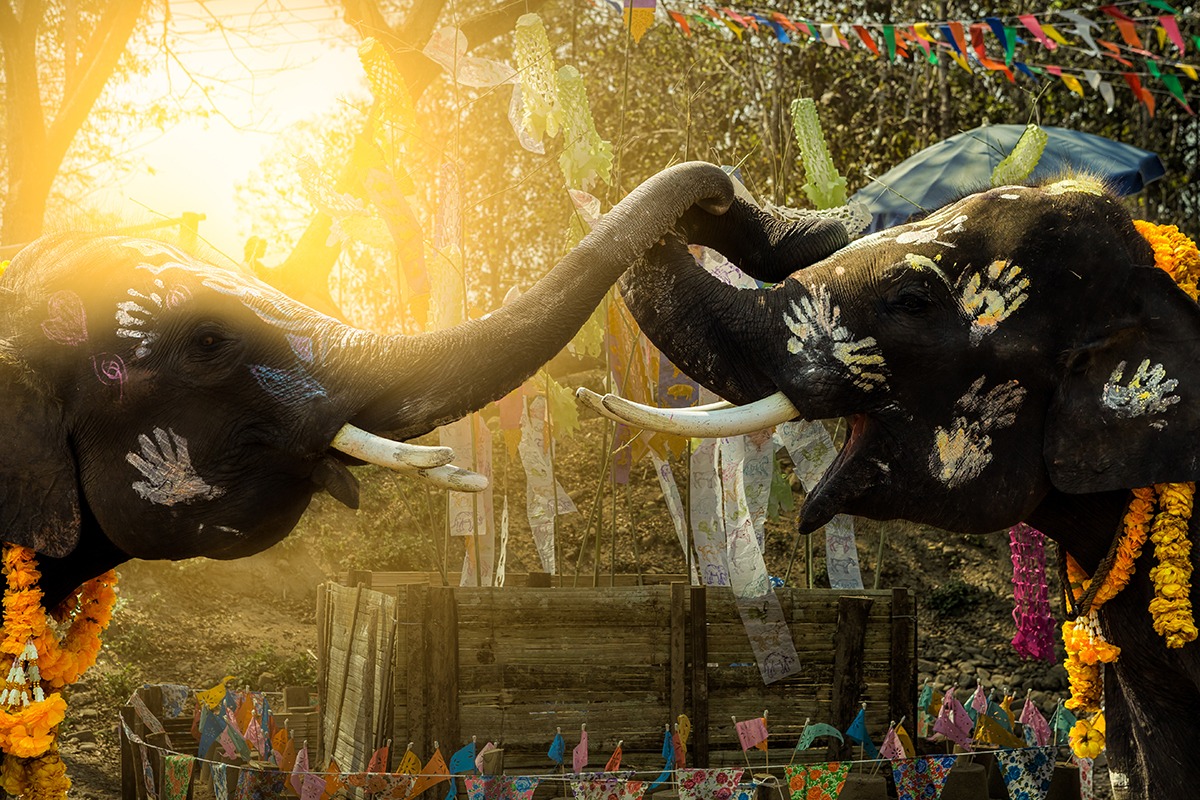
The Best Places to Celebrate Songkran Across Thailand
If it’s your first time celebrating Songkran or you’re simply hoping to get the most out of this special holiday, then staying in a well-connected, festival-friendly area is a must. Here are some of the best locations to celebrate Songkran in:
Bangkok is the capital of Thailand and a premier destination for Songkran 2024. During Songkran, there are lots of areas in Bangkok that you’ll want to prioritize if you’re hoping to enjoy some water fights, including Siam Square, Silom, Khao San Road, Asiatique, Old Town, and Central World. Each of these areas is known for big, fun water fights and is perfect to explore during Songkran.
Chiang Mai – When in Chiang Mai, travelers can experience exhilarating water fights near Old City Moat, or indulge in a visit to one of the many Buddhist temples that are in the area.
Phuket is the perfect destination for beach lovers and a stunning spot to enjoy Songkran. At the center of the action is Bangla Road, where visitors can expect to be liberally doused in water. And while Phuket has lots of beaches to explore, some top options include, Kata Beach, Karon Beach, and Patong beach.
Pattaya is famous for its beaches, but it’s also famous for its Songkran festival, Pattaya Wan Lai. During this event, the whole city turns into one giant water festival, where visitors and locals alike battle it out with water guns, water buckets, and more. For extra indulgence, seek out foam parties on Pattaya Beach Road and enjoy a new experience in Pattaya.
Khon Kaen – While visiting Khon Kaen, Khao Niaw Road (Sticky Rice Road) is the center of the action for Songkran. At center stage are lots of water splashing events, along with folk performers to enjoy.
Ayutthaya is home to ancient ruins, Buddhist temples, and monasteries. If you’re looking for a Songkran experience that stands out, then opt for the Krung Kao Ayutthaya Songkran Festival. Located in the Old City (Krung Kao), this festival will have you splashing with live elephants for an event that’s sure to be remembered.
Useful Tips for Songkran 2024
While Songkran is a fun-filled time, it’s also an important religious festival, so visitors should take care to follow local customs while in Thailand. Here are some important tips that will keep you on the right track while enjoying a stay in Thailand:
Not every person wants to be splashed with water, and that’s okay. Make certain that you’re in an area or with people who are engaging in water-themed festivities. Don’t splash monks, babies, elders, or pregnant women, and be respectful of individuals who have not dressed up for Songkran water fight and may not want to get wet.
Many areas in Thailand are very busy and will be even more congested during Thai New Year 2024 celebrations. Be aware of cars, other people, and your belongings while you’re out. If you are celebrating, it’s best to leave extra items or valuables in a hotel safe to ensure you don’t lose anything while out.
While alcohol may be a part of your celebrations, it’s important to imbibe responsibly. Be respectful of others while drinking. Also drink in private locations or party environments, and never drink in temples.
Dress appropriately during Songkran. This is a festival where you may get wet, so avoid wearing white or see-through clothing and opt for footwear that dries quickly, such as sandals. While in temples, it’s important to dress in clothes that won’t reveal too much, or become translucent when wet. You may also consider wearing goggles or glasses, so water doesn’t get into your eyes. And finally, a waterproof bag will keep important items safe, so bring one along!
The Songkran festival occurs during Thailand’s hottest month, so it’s recommended to stay hydrated and wear comfortable clothing while participating in the water festivities during the day. Also, remember to apply sunscreen since the sun in Thailand can be very intense!
Book your hotel with Agoda ahead of time. Songkran is a very popular time of year in Thailand, so to avoid disappointment, be sure that you pick out your hotel well in advance. Many hotels come with great amenities, like on-site dining, pools, and other activities, so choose from the best and find your fit on Agoda.
Always be respectful of the local culture. While these tips are by no means exhaustive, it’s always a good idea to read up on local customs before a vacation to avoid giving offense, and so you can fit in better and fully enjoy your time.
Where to Stay near Popular Songkran Events
Staying in well-known areas will give you the best options when it comes to hotels, and will make it easier to get to and from events during Songkran. Here are some suggestions for hotels in some of the top areas of Thailand:
Siam Square, Bangkok
When in Siam Square, a stay at Chatrium Grand Bangkok is in order. Centrally located, this hotel features great amenities, like a fitness center, spa facilities, an indoor swimming pool, and free Wi-Fi in all rooms.
Silom, Bangkok
When visiting Silom, consider a stay at Grande Centre Point Surawong Bangkok. This elegant, five-star hotel boasts an excellent location, a fitness center, free Wi-Fi in all rooms, shuttle service, spa facilities, and an outdoor swimming pool.
Khaosan Road, Bangkok
If you’re near Khaosan Road, opt for a stay at Tinidee Trendy Bangkok Khaosan. Stylish and modern, this hotel is exceptionally located and boasts amenities like on-site dining, free Wi-Fi in all rooms, air conditioning, and daily housekeeping.
Patong Beach, Phuket
Patong beach is one of the most popular areas in Phuket, and a stay at Lub d Phuket Patong will keep you close to the action on the beach. Exceptionally located, this hotel offers plenty of on-site entertainment, like billiards, a game room, and a nightclub, and great extras like free Wi-Fi in all rooms, and air conditioning.
Kata Beach, Phuket
While staying near Kata Beach, opt for the resort life with a stay at The SIS Kata Resort. This stunning resort features breathtaking views, on-site dining options, and other great amenities like a crystalline outdoor pool, spa services, and free Wi-Fi in all rooms.
Karon Beach, Phuket
Karon Beach is another popular area for visitors, and while in the area, a stay at GLOW Mira Karon Beach might be perfect for you. This modern hotel is exceptionally located and boasts great amenities, like an indoor swimming pool, a fitness center, free Wi-Fi in all rooms, and shuttle service.
Pattaya Beach
If your visit to Thailand takes you to Pattaya Beach, then consider a stay at EDGE Central Pattaya. This hotel is located in central Pattaya, and features stunning views and excellent amenities, like an outdoor swimming pool, an on-site golf course, air conditioning, and free Wi-Fi in all rooms.
Old Town, Chiang Mai
Old Town boasts plenty amazing hotels, and Phra Singh Village is no exception. Wonderfully located inside the city center, this hotel is a popular choice for families and boasts amenities like an indoor swimming pool, fitness center, bicycle rentals, shuttle service, and free Wi-Fi in all rooms.
Old City Moat, Chiang Mai
Much of Old City is still surrounded by a moat, and the KIRI Hotel Chiang Mai is located within walking distance of this landmark. With great amenities, like free Wi-Fi in all rooms, air conditioning, airport transfer service, and a swimming pool for the kids, this hotel is perfect for a stay in Chiang Mai.


